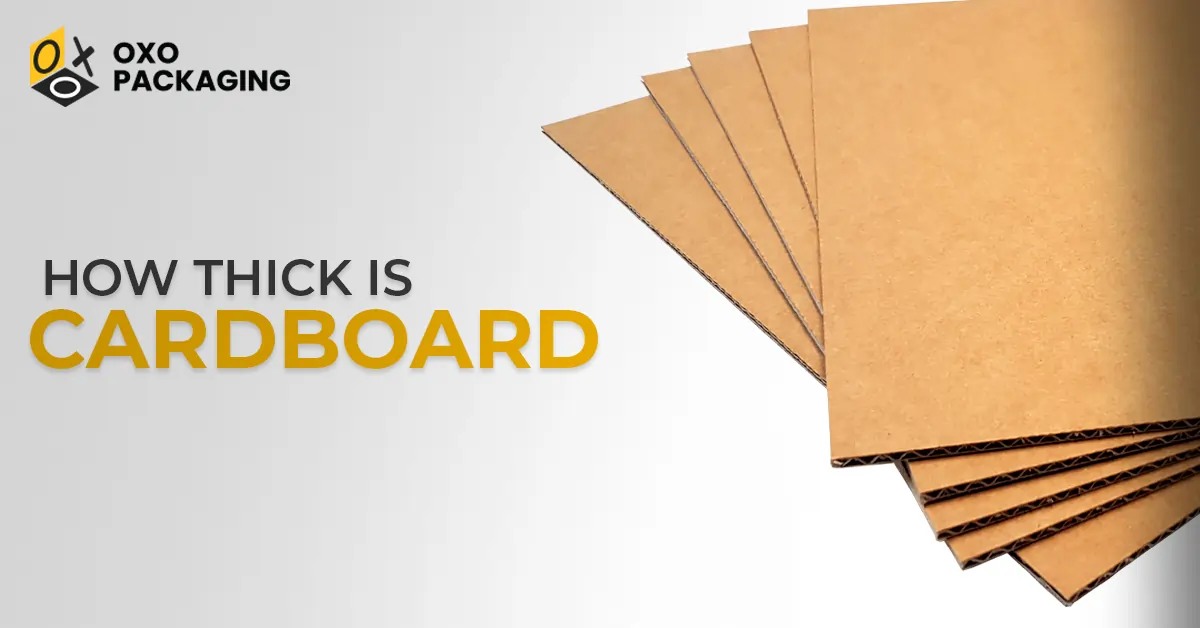How Thick Is Cardboard - A Complete Cardboard Thickness Guide

Designing your packaging box takes a lot of effort. There are a lot of factors to consider and a number of choices that can be overwhelming. One of these factors is cardboard thickness. Knowing what thickness of cardboard to use is important, as it plays a great role in the protection of your product.
This is a complete cardboard thickness guide to help you understand everything you need to know about the type of cardboard to use, its weight, and the thickness of cardboard.
Why Does Cardboard Thickness Matter?
Here are a few reasons why how thick is cardboard matters;
- Survive Product Shipping
- Reduce Transportation Costs
- Protect Products From Outside Elements
- High-End Printing Support
- Overall Cost Of the Box
Cardboard thickness matters more than you think, so let’s dive into some details on why it should matter to you.
Make Shipping Safer:
Harsh shipping and handling conditions can damage your product a lot. You need to ensure your product is fully protected to survive these harsh conditions. The thickness of the cardboard you use to make your packaging box can play a great role in it. If you use a thicker cardboard box that is tear resistant, you can keep your products secure during shipping and handling.
Reducing Transportation Costs:
Shipping costs depend on the weight of cardboard box you use. The higher the thickness of the cardboard, the greater the weight and the higher the shipping costs will be. Boxes made out of thick cardboard sheets can increase your shipping costs. This is why knowing the thickness of cardboard is important, so you can implement strategies to reduce transportation costs.
Protect From Environmental Elements:
Environmental elements such as heat or moisture can harm susceptible products. There are different types of cardboard with different thicknesses that would react to environmental elements differently. Using a thicker cardboard box can help you keep your product secure from outside elements.
Printing Support:
High-end printing requires the recipient material to fully comply. The thickness of cardboard plays a great role in it. A less thicker type of cardboard, say chipboard, might not support high-end printing as well as a high-thickness form of cardboard would. So depending on your printing requirements, you should choose your cardboard thickness.
Overall Costs Of The Box:
The cost of your box depends a lot on the cardboard thickness. A thicker cardboard sheet would cost more than a low-end option. So depending on the kind of product you sell, you can allocate the packaging cost and choose the thickness of the cardboard accordingly.
How To Measure The Cardboard Thickness:
There are two different methods you can use to know how thick is cardboard.
Automatic Thickness Gauge
With an automatic thickness gauge, you put in a piece of cardboard, and the machine takes care of everything. It presses the cardboard piece to calculate the thickness and gives you the result as a number. The automatic thickness gauge is almost precise with the thickness calculation, so you can trust it.
Manual Thickness Gauge
With a manual thickness gauge, you have to place the cardboard piece in place on the base and use the screw to tighten the extension rod. Once the extension rod has the cardboard tightened, you can calculate the cardboard thickness. Manual measurement may not be accurate because there is a chance for human error.
Units To Measure The Cardboard Thickness:
There are different units to measure the cardboard thickness and different techniques you can use to measure it. Here are some details about the thickness calculation units and techniques.
-
Grams Per Square Meter (GSM):
GSM is the most popular and probably the most accurate unit of measurement for corrugated cardboard. It takes into account the weight, length, and breadth of a cardboard sheet to calculate its thickness.
While GSM might be a popular method, it is difficult to convert into other units that are easily understandable. Here are some examples of different cardboard types based on GSM to help you understand how they work;
- A cardboard sheet with a GSM of 35 to 55 is often used for newspapers
- A 90 to 100 GSM sheet is often used for printer paper
- 120 to 140 GSM cardboard sheets are often used for posters
- A 210 to 300 GSM cardboard sheet is often used for brochures
- The highest form, 350 to 400 GSM sheets, are often used for packaging
So based on these examples, you can choose the thickness based on your requirements. However, a higher GSM may not mean a higher weight. While GSM may account for the weight of the sheet, it is not the only factor that determines it.
Using The Point System:
Another method you can utilize to measure cardboard thickness is the point system. One point in the point system is calculated at 1/1000 of an inch. If you calculate in the point system, you can find corrugated sheets from 8 PTs, which are the thinnest, all the way up to 16 PTs, which are the thickest sheets of paper.
Corrugated Flute Type:
Another method to calculate the thickness of cardboard would be to use the corrugated flute used inside. The cardboard boxes used for shipping include corrugated flutes. The term corrugated flutes refers to the wavy sheet of cardboard sandwiched between the cardboard liners in a corrugated sheet. These flutes provide insulation and protection to the corrugated sheet for whatever purpose you use them for.
There are different types of corrugated flutes that may account for different thicknesses. From the thinnest to the thickest, there are different flute types to choose from. Let’s check out some of these flute types to help you understand them better with this cardboard thickness chart.
- An A flute is 5 mm or 1/4" (0.25”) thick
- A B flute is 3 mm or 1/8” (0.125”) thick
- A C flute is 4 mm or 11/64” (0.17”) thick
- D flute is 2 mm or 17/200” (0.085”) thick
- E flute is 1.5 mm or 1/16” (0.0625”) thick
- F flute is 0.6 mm or 1/32” (0.03125”) thick
Considering these, you can know the thickness of cardboard boxes. You can also calculate how much do cardboard boxes weigh based on the flute type they use.
Corrugated Board Type:
The type of corrugated board can also help you calculate the thickness. There are three main types of corrugated board used for different cardboard boxes or other cardboard applications. You can choose from single face corrugated boards, double wall boards, or triple wall boards.
Single face boards consist of a single layer of liner paired with a layer of fluted paper. This type of corrugated board is perfect for inner packaging components that do not require any extra protection.
Double wall boards are three pieces of liner covering two pieces of fluted paper. This type of board is perfect for heavy-weight or fragile items that require extra protection during shipping and handling.
Triple wall boards are the most sturdy form of corrugated board. These consist of four layers of liner and three layers of fluted paper. This type of board is perfect for industrial scale applications.
Considering the type of board, you can easily identify the thickness of cardboard sheets.
Read More: Differenece Between Cardboard and Corrugated Shipping Boxes
How To Choose The Best Cardboard Sheet For Packaging
When choosing a cardboard sheet for packaging, there are a few factors that you need to consider. These include;
- Consider the contents you need to pack
- The shipping process
- Your packaging budget
- The design process you are going with
- The manufacturer you choose
So now that you know everything about cardboard thickness, including how to measure it, let’s discuss these factors in detail to help you choose the best packaging.
The Contents Of The Box:
The first thing you need to consider is the contents you need to pack inside the box. Depending on the items you wish to pack inside the box, you can choose the cardboard sheet to make the box. If the items you are packing are fragile, you need a box with high thickness. So considering what you need to pack, you can decide on the cardboard thickness.
Shipping Process:
What kind of shipping process are you going to use to deliver your products? Are you choosing the right shipping method? Considering this, you should finalize the materials for your box. Choose a cardboard thickness that can handle harsh shipping and handling conditions. This ensures your product reaches the customer in pristine condition.
Packaging Budget:
How much of a designated budget do you have for packaging? Ask yourself this question before finalizing your material option. Cardboard with varied thicknesses can have different costs. So based on your budget, you can choose the right packaging option.
Design Process:
What kind of design are you going with? What printing techniques would you use? What colors do you wish to print? All these factors depend on the thickness of your cardboard material. A lower thickness cardboard sheet may not support high-end printing or would not offer you the flexibility to design. So if you need to print intricate patterns or graphics, you need to choose thicker cardboard. If you are going with a simpler approach, a thinner cardboard sheet would suffice.
Get Help From A Professional:
To get the perfect packaging job, going with an expert is the best idea. Rather than diving into the complexities yourself, you can let a packaging expert take care of everything for you.
Collaborate with OXO Packaging for the perfect packaging job. We are packaging experts with a decade of experience in the field. We can create the best packaging boxes that complement your product and present your brand in the best light. So let us design the best packaging for you.
Conclusion:
So this was all about cardboard thickness that you need to know. Cardboard is a popular choice for packaging and many other applications. So if you are planning to choose cardboard for your packaging, let OXO Packaging create a great box for you.
The thickness of cardboard may vary depending on your requirements and the weight of the products you want to pack in its boxes. The average thickness of cardboard for packaging boxes ranges from 3mm to 5mm.
Cardboard is thicker as compared to the paper that is used to create that cardboard. Where cardboard is around 3mm thick, the paper that creates corrugated cardboard is around 50 to 80 points thick.
Yes! The recyclability of cardboard is merely affected by the thickness of the cardboard. Pulping and recycling of all types of cardboard materials is possible.




